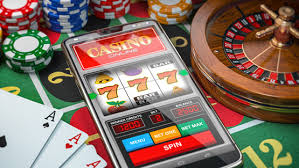When encountering the question “What are the odds tỷ lệ kèo trực tuyến?”, many beginners feel overwhelmed by the seeming complexity of probability and chance. This article aims to shed light on this fundamental concept, offering clear explanations and practical insights for those just starting to explore the world of odds. Whether you’re gambling, trying to understand risk, or simply curious about likelihoods in everyday life, grasping the basics will empower you to make more informed decisions and appreciate the role of probability in the world around you.
Understanding the concept of odds
Before diving into how to calculate or interpret odds, it is essential to understand what odds actually represent. In simple terms, odds express the likelihood that a particular event will happen compared to it not happening. Unlike percentages or probabilities, odds are often presented as a ratio, such as 3:1, indicating the event is three times more likely to occur than not.
What are odds in plain language?
“Odds” describe the ratio of success to failure for an event. For example, if the odds are 1:4, it means there is one chance of the event happening versus four chances of it not happening. This way of thinking helps visualize how likely an event is, especially in gambling, sports betting, and risk assessment.
Understanding the difference between odds and probability is crucial. While probability looks at the chance of an event occurring expressed as a percentage (e.g., 25%), odds focus on the ratio of occurrence to non-occurrence. They are related but not identical; converting between the two is straightforward once understood. Odds can be converted to probability by dividing the success part of the ratio by the total parts (success plus failure). Conversely, probability can be expressed as odds by expressing success over failure.
How to interpret odds in everyday situations
Interpreting odds generally involves understanding what they imply about an event’s likelihood. For example, if a horse race has odds of 2:1 on a certain horse, it suggests that for every two chances the horse wins, it is expected to lose once. While this does not guarantee an outcome, it provides a helpful sense of the risk involved.
How odds help in making decisions
Odds are valuable tools in decision-making. Whether you are betting on a sports team or evaluating risks in finance, understanding odds allows you to weigh potential rewards against the probabilities of success. For instance, high odds in a bet might mean the outcome is unlikely, but potentially offers a higher payout if it occurs. Conversely, low odds indicate greater likelihood but smaller rewards.
In everyday life, odds can aid in assessing risks—like the chance of rain before planning an outdoor event, or the likelihood of winning a raffle. Recognizing what the odds imply about likelihood helps in making smarter, more informed choices and avoiding unnecessary risks.
Calculating odds: step-by-step guide
Calculating odds involves understanding the basics of probability and ratio conversion. Here is a simplified step-by-step process suitable for beginners.
Step one: identify the event and outcomes
First, clearly define the event in question—such as rolling a six on a die. Then, list possible outcomes and determine which ones count as success. In the die example, success might be rolling a six.
Step two: find the number of favorable outcomes and total outcomes
Next, determine how many ways success can happen versus all possible outcomes. If rolling a six, there is exactly one favorable outcome. Since a standard die has six faces, the total outcomes are six.
Step three: calculate probability, then convert to odds
Calculate the probability by dividing favorable outcomes by total outcomes. For the die roll, the probability of rolling a six is 1/6 or about 16.7%. To convert this probability into odds, express the likelihood of success as a ratio to failure: success to failure ratio = Favorable outcomes : Unfavorable outcomes, which is 1:5 in this case.
Troubleshooting common issues
- If you encounter unclear outcomes, double-check the total possible outcomes to ensure accuracy.
- When converting probabilities to odds, remember that odds express success versus failure, so always compare favorable to unfavorable outcomes.
- Keep safety precautions in mind when dealing with real-life risks, such as ensuring toys or machinery are used properly or not used in hazardous environments.
Comparing different types of odds and their uses
Odds come in various formats depending on context, with common types including fractional odds, decimal odds, and American odds. Each is popular in different regions and applications, influencing how individuals interpret and use them.
Fractional odds (e.g., 3:1)
Commonly used in the UK and Europe, fractional odds show the profit relative to the stake. For example, 3:1 odds mean that for every dollar wagered, three dollars can be won if successful, plus the original stake.
Decimal odds (e.g., 4.0)
Popular in Europe and Australia, decimal odds show the total payout, including the stake, for a winning bet. A decimal of 4.0 indicates that for every dollar wagered, four dollars total is returned (including principal).
American odds (e.g., +200 or -150)
In the US, odds are often presented as either positive or negative numbers. Positive odds (e.g., +200) indicate the profit on a $100 stake, while negative odds (e.g., -150) show how much must be wagered to win $100.
Choosing the right type of odds depends on your familiarity and the context. Understanding each format enables you to interpret risks and rewards accurately.
Tips for beginners on using odds effectively
To become confident in understanding and applying odds, consider these practical tips:
- Always convert odds to probability when comparing options, as this offers a clearer perspective on chances.
- Be aware of biases—sometimes odds may be presented in misleading ways to promote betting or certain perceptions.
- Use odds as a guide rather than a guarantee—luck and randomness always play a role.
- Practice with simple examples, such as coin tosses or dice rolls, to strengthen your grasp before tackling more complex situations.
- Remember that odds do not predict certainty but indicate likelihood, so always consider other factors affecting outcomes.
Conclusion
In sum, “What are the odds https://tylekeo.black/?” essentially asks about the likelihood of any event happening, expressed through ratios or probabilities. Starting with simple definitions, understanding how to interpret and calculate odds, and being familiar with different formats will help you navigate everyday uncertainties more confidently. Applying these basic principles enhances decision-making in gambling, finance, risk assessment, and daily life, making probability a valuable tool for beginners eager to understand the role of chance and likelihood in the world around them.







